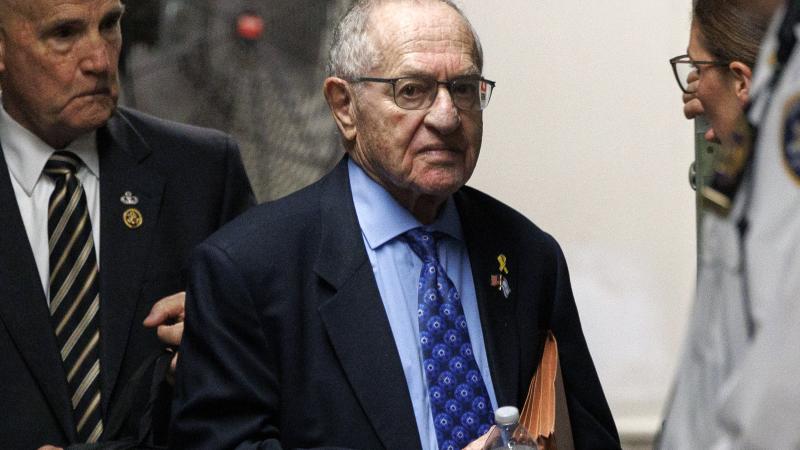Latest New York Times story to crumble follows long history of journalism failures
Ashley Rindsberg, author of "The Gray Lady Winked: How the New York Times' Misreporting, Fabrications and Distortions Radically Alter History," explains the cause of the Times' decades of misreporting.
On Thursday, the leaders of President Biden's intelligence agencies declared they held little confidence in a New York Times' story from last June that claimed Russia put bounties on American troops in Afghanistan.
It was the latest setback for the famous newspaper, which has seen its reporting on the now-debunked Russia collusion scandal be eviscerated by the FBI and its hit podcast series Caliphate retracted.
Ashley Rindsberg, author of "The Gray Lady Winked: How the New York Times' Misreporting, Fabrications and Distortions Radically Alter History," said Thursday's setback follows a decades-long pattern of journalism failures. He questioned what the Times will do next with the Afghanistan fallout.
"Now what is the Times going to do? Are they going to print a retraction, a correction? Are they going to apologize? Are they going to do the kind of reporting that will get as much coverage and profile as the original story? And my guess is that they won't, and I say that from looking at past experiences," Rindsberg told the John Solomon Reports podcast.
"That's what's happened time and again: the big story break, and there's a lot of hoopla, and there's a lot of coverage, and the narrative gets cemented. And when the story turns out to be false, or mistaken, or what have you, there's either a very small correction that's printed at the bottom of the article that very few people will pay attention to, or nothing at all," he said. "So I think in this case, we'll see what happens, and hopefully the Times will do the right thing."
"From what I learned through years and years of researching this book and diving into these major historical episodes, it was never the case, and it's still not the case, that the Times is able to take responsibility and to act in an accountable way with these errors."
One of the reports that the Times fabricated was on the bombing of Nagasaki, Rindsberg explained. The Times' reporter, William Lawrence, had been a "great science reporter" who "was so on top of the story about nuclear physics and the developments being made at that time, that he was really well ahead of the government in terms of his understanding of what was going on," Rindsberg said.
Then Lawrence was suddenly "reporting on vitamin B and studies related to smoking and cancer, and really humdrum stuff for the time. And the question was kind of, 'Why, what happened?'"
Rindsberg said, "He reappears on the scene in one of the bombers on the way to bomb Nagasaki. And he writes this great report, news report about being on a bombing run, where they're — he's actually watching the bomber drop the bomb ... on Nagasaki, he was the only reporter to have that kind of access. And, you know, when you think about it, that makes sense. There should be no reporters watching a nuclear bomb being dropped on a civilian population."
"What turned out to be the case was that he had been hired by the Department of War to lend a hand, in a euphemistic term, to basically give them cover and run with the complete lie that there was no such thing as radiation sickness, that when they dropped this bomb, it was just a bigger version of a conventional bomb."
"But what doctors and medical personnel were finding on the ground, which we know to be the case today, is that people were dying using — they were just dropping like flies, and the Times ran this story — series of stories — saying there was no such thing as radiation sickness. And they gave cover to the U.S. government in a way that was hugely damaging for decades, not just at that time. And that was a really shameful thing. And again, he won a Pulitzer for his reporting."
When asked if the issues at the Times starts with its leadership, Rindsberg said, "Absolutely. I mean, I think that's true in any organization, in any institution, but particularly in the case of a world famous, very powerful news company that has been owned by the same family for 120 years. They have complete control — the Sulzbergers — they have passed along the role of publisher of that newspaper for 120 years from male heir to male heir, it's very much a patriarchy in that sense."
"And they call the shots, and if they didn't want the shots to be something like the 1619 Project happening, it wouldn't happen ... I really think that the responsibility goes all the way to the top, which at the moment is A. G. Sulzberger."
"And you know, again, with something I've seen from the book, is that it was whenever the family, the owning family of the New York Times, the Sulzbergers — got involved in a story, or their interests got involved, or their ideologies got involved, that's when things went really, really wrong. And I think that's exactly what we're seeing here is that interest and ideology, together, they form a toxic stew in journalism, and that's the most dangerous thing."
















